Last Updated on
Any hunter would agree that a quality pair of binoculars is important on the list of necessities when it comes to hunting equipment. A quality pair of binoculars can be pricey; however, with binoculars, you will most likely find that a “bargain” is usually not a good deal. A good guideline to adhere to when shopping for binoculars is to buy the best quality for the amount of money you can afford to spend; if at all possible, SPLURGE.
When selecting new binoculars it is important to consider more than just the magnification and objective lens diameter. Other important considerations should include the field of view, exit pupil, eye relief, close-focus distance, lens coating, lens quality, and the weight and overall size of the binoculars. The average pair of hunting binoculars will experience a rugged lifetime for its intended use in the field so other things to consider are the manufacturer’s brand reputation and warranty and repair guarantees.
In my opinion and for various reasons that will be discussed in this article, the perfect general hunting binocular would be a pair made of quality, multi-coated glass with a 10x magnification and an objective lens of 42mm or a 12x magnification for distant game stalking. I took three quality pairs of binoculars and put them through the test to bring you my opinion of where the binoculars rank. Those binoculars are the Hawke Endurance PC, Nikon 7 ProStaff and Leupold Mojave BX-3 binoculars. To help you understand the reasoning behind my opinion of binocular choice it is important for you to not only understand basic binocular information such as magnification, but also to understand some vital information and the purpose and importance of specifications and mechanics of binoculars.
Binocular Basics
Binoculars are made up of dual parallel scopes with lenses on each end. When viewed through simultaneously, this allows the user to see a 3-D image of what they are viewing instead of a flat image as seen through a single lens. The smaller lens is the ocular lens and serves as the eyepiece with the purpose of magnifying the image transmitted through the objective lens. The size of the objective lens determines the light gathering capability of the binocular; the larger the objective lens, the more light it can gather translating into greater image clarity.
Due to the natural function of the lenses, the image that is passed through the objective lens is upside down. Within the parallel scopes are prisms that are basically mirror-coated glass that invert the image to its proper orientation. There are two types of prisms; porro prisms and roof prisms. With a porro prism, the elements of glass are offset from one another at an angle resulting in the objective front lens to be offset. With a roof prism, the elements of glass are on top of one another making the binoculars a slimmer, more streamline shape.
Features And Specifications
Magnification and Objective Lens
The optical powers of binoculars are categorized by a formula of magnification and objective lens size; such as 8x36mm or 10x50mm. The first number in the formula refers to how many times closer an image would appear than with the unaided eye. The greater the magnification the greater the detail, but you will find that higher magnification also means that the binoculars will be harder to stabilize on the object you are viewing and will have a narrower field of view.
The second number in the formula is the diameter of the objective lens measured in millimeters. The larger the objective lens, the more light gathering capabilities the binoculars will have, and the brighter the image. This is crucial when using binoculars at dusk or in low light conditions.
Field of View (FOV)
The field of view is a side-to-side measurement, which is the widest dimension of the circular viewing field seen through the binoculars. The FOV is defined by the width of feet of the area visible at 1000 yards or in degree; one degree equals 52.5 feet per 1,000 yards. Binoculars that feature a wider field of view are ideal for viewing active wildlife. In general, the higher the magnification of a pair of binoculars, the narrower the FOV will be.
Exit Pupil
The exit pupil refers to the beam of light that is visible by the user’s eye at the ocular eyepiece. The higher the exit pupil, the brighter the image will appear; especially in low light conditions. To determine the size of the exit pupil, divide the objective lens diameter by the magnification power. If your binoculars have an objective lens diameter of 36 mm and a magnification power of 8, then the exit pupil is 4.5 mm.
Lens and Lens Coating
Lens coatings help to reduce reflections and glare with anti-reflective coatings applied directly to the glass surfaces allowing as much light as possible to enter the optics without the glare. There are several levels of coatings available:
-
Coated (C)
Only some surfaces have been coated with a single coating layer. Fully Coated (FC)
All glass lens surfaces have been coated. Multi-Coated (MC)
Some surfaces have been coated. Fully Multi-Coated (FMC)
All glass lens surfaces have been coated with multiple layers.
For comparison, an uncoated optical glass lens or prism reflects about 10% of the light incident on one of its surfaces, allowing only about 90% of the light to pass through. Standard/fully coated optical glass of magnesium fluoride (MgF2) applied to the lens and prism surfaces reduce the level of reflected light to about 4% and with substantially reduced ghost images of bright objects. More sophisticated multi-coated/fully multi-coated optical glass offers 7 to 15 layers to further reduce reflected light and can result in a total light transmission through the lens or prism of 90% or more.
Eye Relief
Eye relief is the distance from your eye to the eyepiece, at which you still see the full field of view. The distance is measured in millimeters and varies from 5 mm to 24 mm. Eye relief is especially important for eyeglass wearers. A long eye relief of at least 13-15 mm will allow a user to wear glasses when viewing through binoculars without losing the full field of view.
Close Focus
Close focus is the minimum distance in which binoculars will focus on an object. The binoculars will not focus on a subject closer than that distance. This may not be as important for hunters as it would be for bird watching, but it is nice to know that you can focus up to that minimum distance if you need to.
Focus
Binoculars can be designed with one of several style focus options: individual eyepiece focus (IF), adjustment-free or focus free, or adjustable focus, also known as center focus. Individual eyepiece focus requires that the user focus each eyepiece when viewing an object. Once each eyepiece is adjusted for the user’s eyes, objects from 40 yards away to infinity are always in focus and require no additional adjusting. Adjustment-free or no focus binoculars are set and locked at the factory and cannot be adjusted. This means you cannot focus on anything closer than the standard 40 yards and that the binoculars cannot be adjusted for differences in strength between the right and left eye. Adjustable focus or center focus binoculars are the most versatile; using a single wheel to focus on objects both very close and far away. Adjustable focus binoculars are recommended for hunting game because a user may be interested in looking at a particular animal among a group or herd of animals. The most common style of adjustable binoculars is adjusted by a wheel mechanism between the two parallel scopes and they adjust both scopes simultaneously. This style adjustment almost always offers a diopter adjustment on one of the lenses for a clearer picture.
Waterproof/Weatherproof
Waterproof/weatherproof binoculars are a must for hunters. With today’s technology and product standards the majority, if not all, of the binoculars manufactured specifically for hunting are waterproof and fogproof. A hunter never knows when they may get caught in a quick shower, a torrential downpour, or drops their binoculars in the mud while in the marshes.
Waterproofing not only keeps water out when it is raining, it also keeps your binoculars from fogging up with climatic changes. Fogproof binoculars are designed to prevent moisture related problems because the air inside the binoculars is replaced with Nitrogen. Weatherproof binoculars will ultimately last longer. Another recommendation is to choose a pair of binoculars with a rubber or durable outer coating. A rubber outer coating is helpful when handling the binoculars with gloves or when using binoculars in frigid cold or extremely hot weather; the exterior will not get extremely hot or cold.
There are many brands of binoculars available on the market today all with different quality levels and optional features. Good quality binoculars, both in optical quality and mechanical functionality, are indispensable. Based on my independent research, the best binocular for general hunting is 10x42mm. The magnification is good for stalking and viewing game at longer distances while the objective lens still has a higher amount of light gathering capabilities and a wider field of view for a larger picture frame for herd animals or when viewing more than one animal as the subject.
Comparison Of Popular Brand Binoculars
Keeping the mechanics of binoculars in mind, I put the following comparable 10x42mm binoculars through a rigid field test, weighing each one for quality and features. I chose the Hawke Endurance PC, Nikon 7 Prostaff, and Leupold BX-3 Mojave. The three units all had resembling features so the real test was going to be determining which binocular was the better product for the monetary investment and for long term use. First, let us compare the features of the three units:
|
Brand |
10×42 Model |
Porro/Roof Prism |
Coating |
FOV |
Eye Relief |
Close Focus |
Weight |
MSRP Price |
|
Hawke |
Endurance PC |
Roof |
FMC |
426 |
15 |
6’6” |
25 |
>$219 |
|
Nikon |
Prostaff 7 |
Roof |
FMC |
344 |
15 |
13’ |
23.5 |
$218 |
|
Leupold |
BX-3 Mojave |
Roof |
FMC |
326 |
16 |
7.5’ |
24 |
$499 |
As reflected, all three of binoculars compared are very similar in features and specifications and there were no significant differences in the actual product itself as far as glass clarity, glare reduction, ease of use of the eye-cup/eye relief and ocular adjustment. The close-focus is not as important in general hunting so I ignored the differences in this feature all together.
Where I did find a difference is with the Field of View (FOV). The FOV is an important feature in situations where you are watching several animals in a herd or scouting open range. The Hawke Endurance PC binoculars had a noticeably wider FOV that had superior clarity at various distances. The other two products had superior clarity but the FOV was notably narrower.
Included in the box with each product were a case, padded neck strap, lens covers and User’s Manual. Hawke includes a deluxe zippered, hard-sided, clamshell style case for their product, where Leupold includes a neoprene case with Velcro closure; which is known for standing up through lengthy use from my experience. Nikon included a standard Cordura nylon case with Velcro closure.
There was a slight difference in the weight of the product but only within 1/2 to 1-1/2 ounces. The overall size of each binocular was within a 1 to 1-1/2″ of each other so the size was also very comparable and perfect for wearing around your neck or stowing in a backpack. Each binocular has a nice rubber exterior finish for easy grip. All three products are Waterproof/Weatherproof and are covered under a similar non-transferable Limited Lifetime Warranty.>
The most disappointing option was the lens covers for each brand. The ocular lens cover was the same style for all three pair of binoculars and is pretty standard across the market. The lens cover stays attached to the neck strap when removed. The objective lens covers were disappointing. Nikon had the worst of the three with independent, pop-in style covers on the objective lens. It didn’t take but one time pulling them out of my backpack for one of them to be temporarily lost. The Leupold and Hawke objective lens cover has the same style made of rubber with a ring keeper that keeps the covers attached to the binoculars. I found that the Leupold ring kept sliding off of the binocular. The Hawke lens cover performed the best in the field.
The Results
Ultimately, if I had to choose a pair of binoculars among these three choices, I would have to pick the Hawke Endurance PC. The phase coated lenses are crisp and clear with a great FOV and overall the binoculars are the perfect size and weight. The lens covers for the Hawke product was the best of the three and the finish on the exterior had a nice feel to it. The hard-sided clamshell style case and padded neck strap were quality accessories. One of the most appealing things the Hawke Endurance PC has going for it is the price. I would of expected to pay much more for these binoculars based on their quality. The MSRP of $219 and Limited Lifetime Warranty make these binoculars a great investment.
My second pick would be the Leupold BX-3 Mojave binoculars. The lenses are made from great quality glass and the feel and function of these binoculars is nice. The MSRP is more than double the price of the other two comparisons which made that the biggest downfall for this product. With that said, if I had extra money to splurge, I would still consider purchasing these binoculars as my general hunting binoculars because Leupold-Stevens not only have excellent customer service, they also have an amazing reputation for returning or replacing any Leupold product. These binoculars would definitely last many years for their intended purpose.
When comparing the Nikon Prostaff 7, I have to be honest and say I would not purchase these binoculars for my personal use for general hunting for several reasons. Mainly because I felt that the product was the least impressive of the three compared. The unit was actually the lightest among the three but the clarity and light gathering capabilities was not as crisp as the comparisons. Further, Nikon has already discontinued this product and has replaced it with the “new and improved” Nikon Prostaff 7s. The economical MSRP of $218 would not even encourage me to make the purchase if I had the option of purchasing the Hawke Endurance PC for $1 more.
Premium quality binoculars are more costly, but will prove worth the price in performance, giving a hunter many years of service in the field. If your time and budget allows, invest the time into the research and invest more money at the time you purchase your hunting binoculars; you will be making a lifetime investment.
Leupold, Nikon and Hawke logos are the sole property of its rightful owner and used within this writing solely for the promotion of products herein as requested by the product’s manufacturer.
Endorsement Disclosure: Per the guidelines of the Federal Trade Commission, the products reviewed in these product reviews is an endorsement and the writer may have been compensated by “in-kind” payment to review the product.

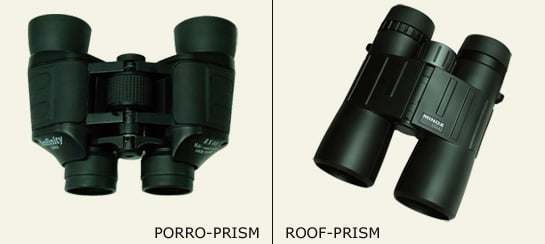

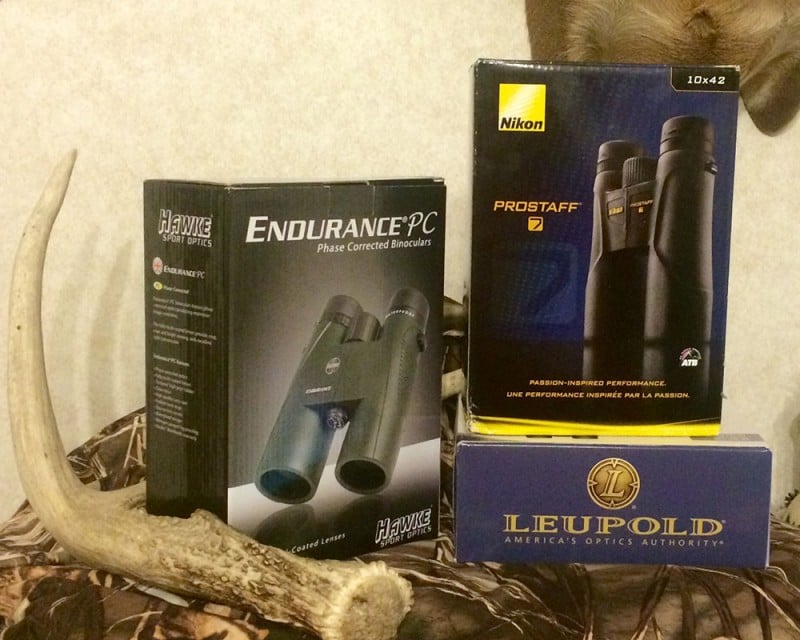

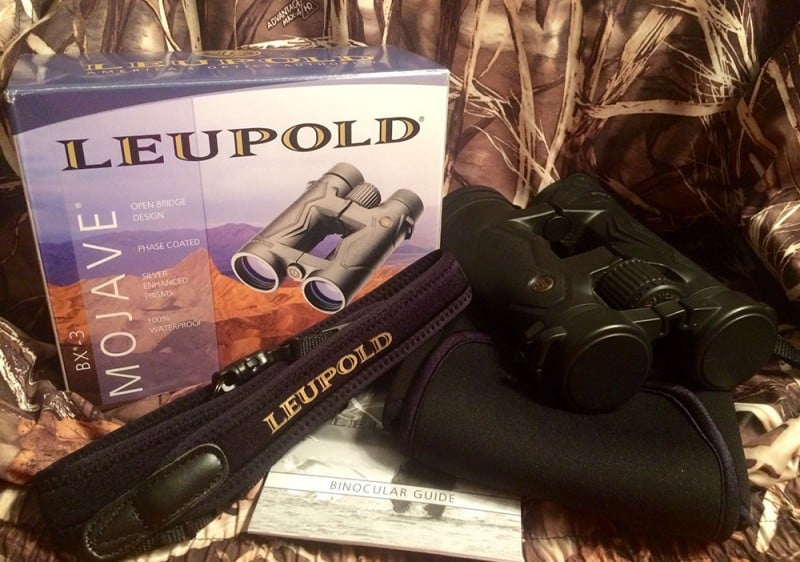
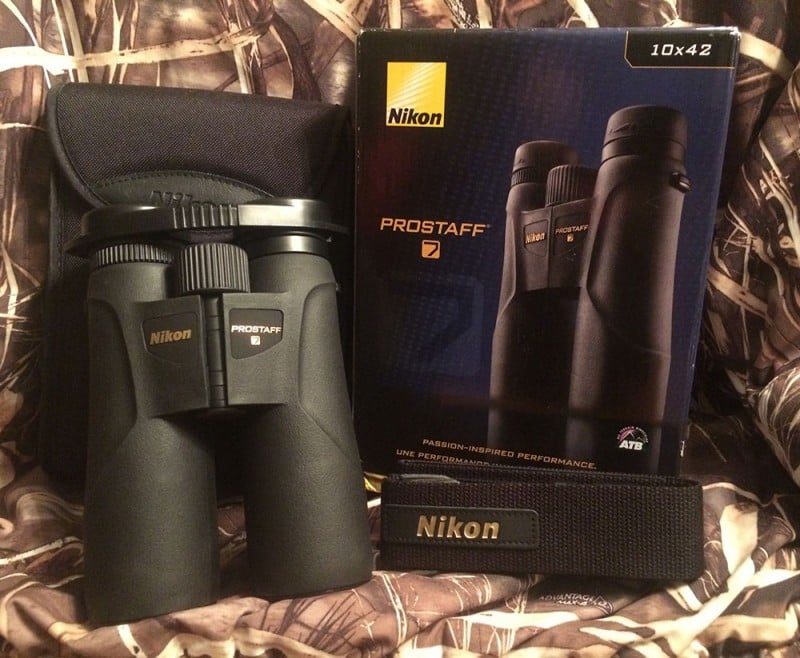
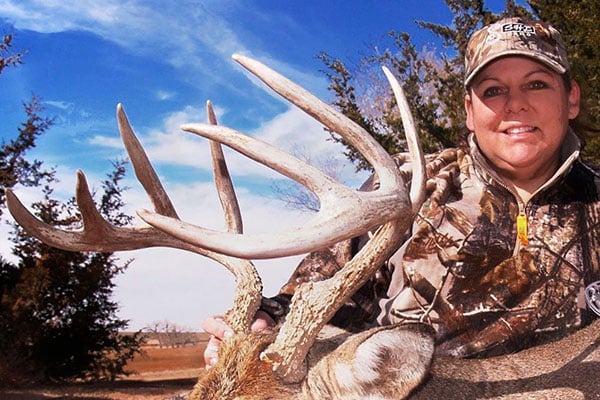
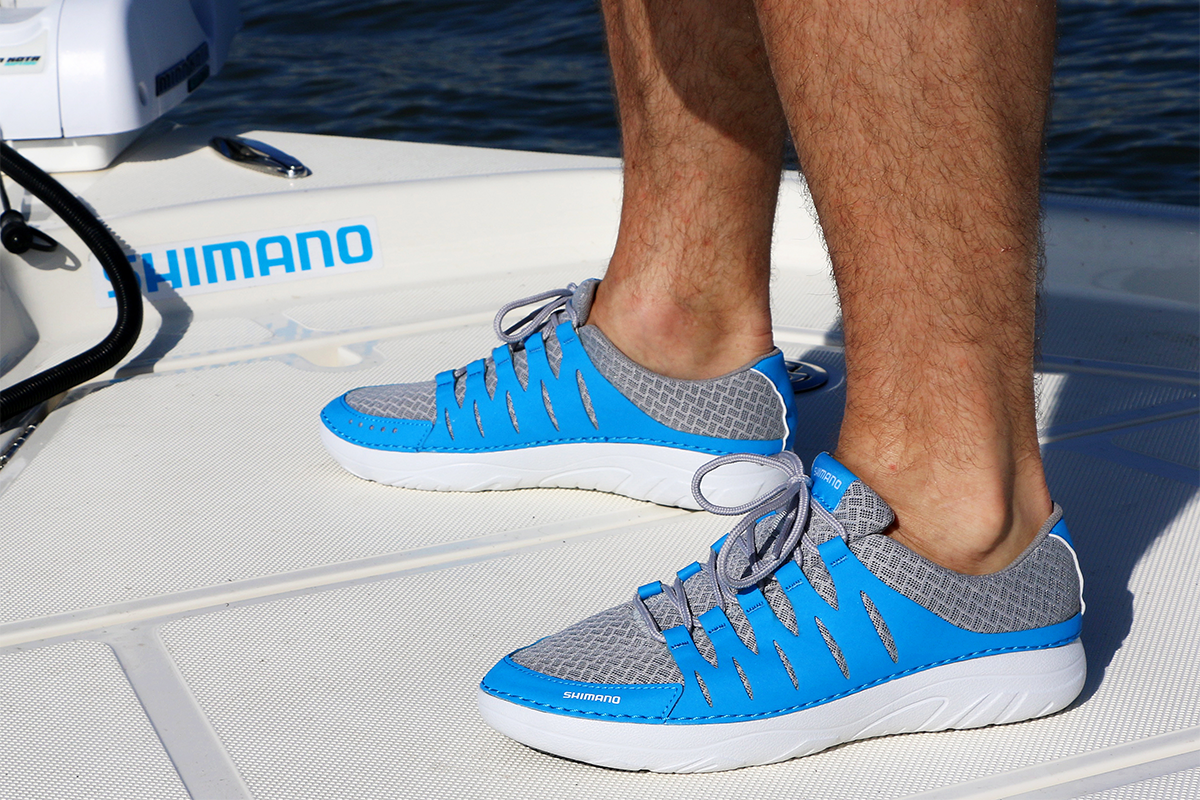

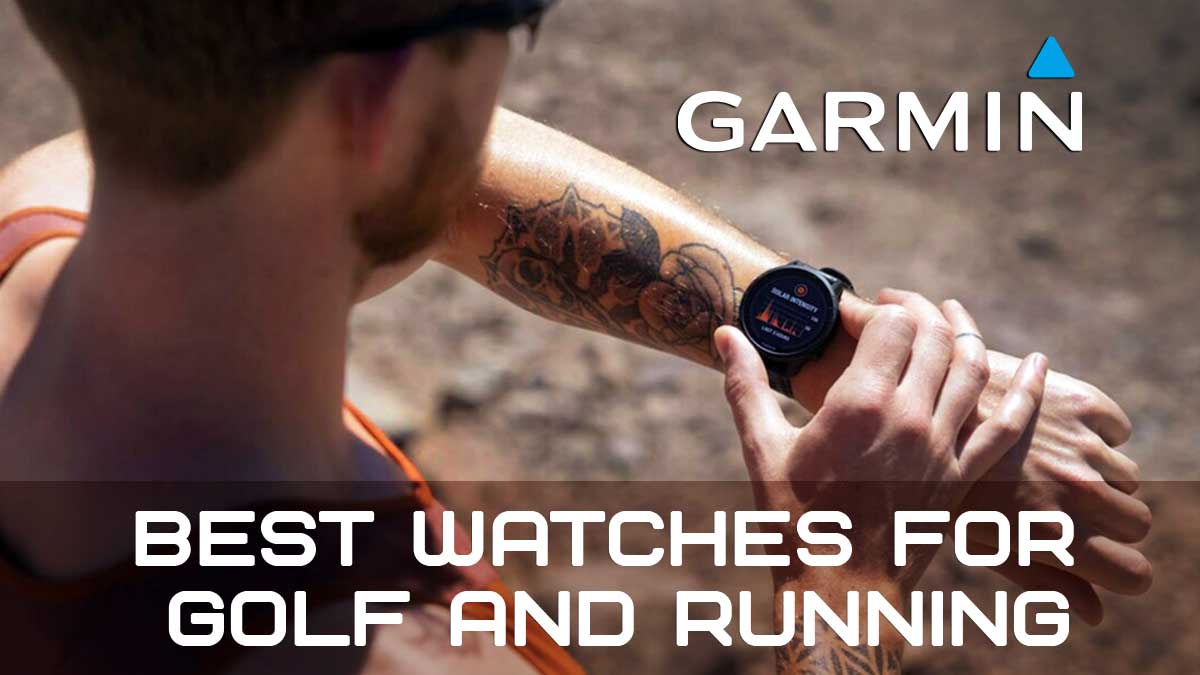


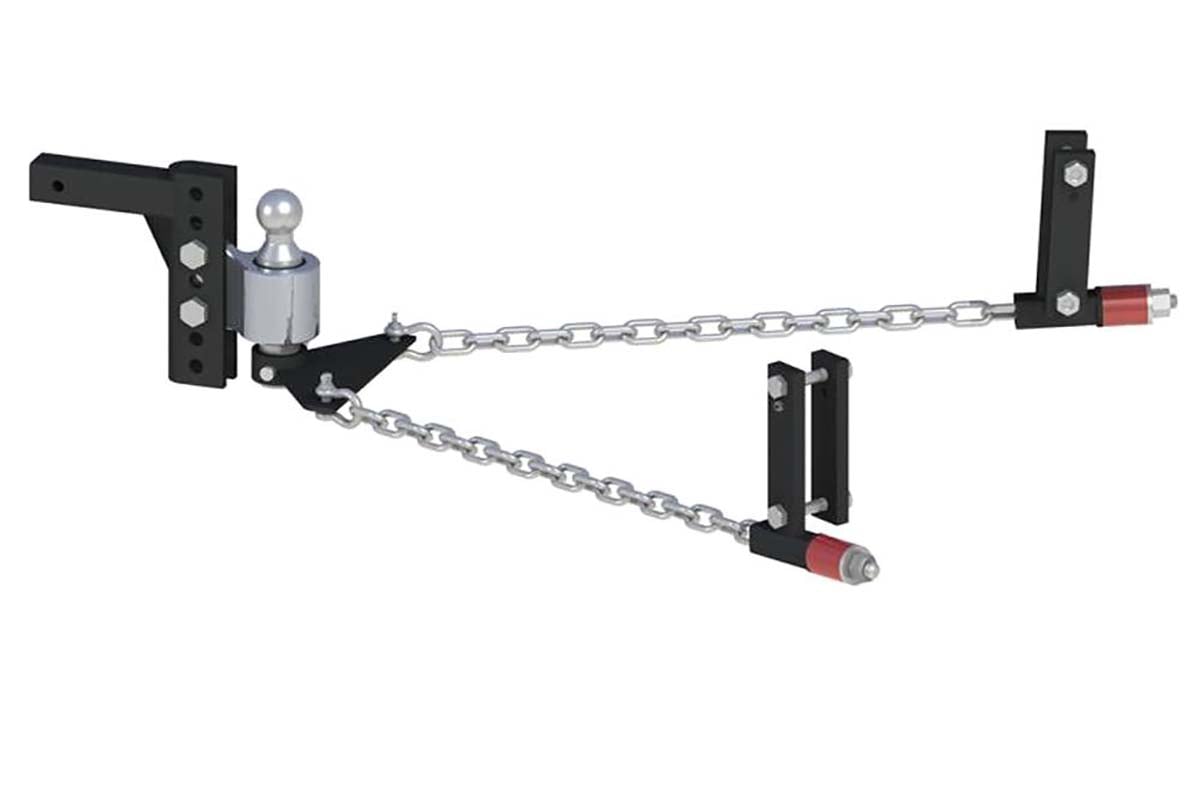



9 comments
I agree completely on the Nikon, I gave mine away. I loved the Leupold but have never tried the Hawke., but I think that is going to have to change!
I am glad to read this article! Very informative. I have been trying to decide what brand of binoculars to purchase for myself. I’m thinking a decision has been made! Here’s to clearly seeing animals for great harvests!!
Great advice. I have purchased inexpensive binoculars in the past thinking I was getting a bargain. It’s not a bargain if it’s broke after about a month. Or you can use them if you turn your head a certain way and close one eye.
Great Review! Very informative
Great article, great read! I’ve been in the market to purchase new binoculars, and reading this definitely helped me with research! Very informative–I will remember this when purchasing my new binoculars!
Great info! I was surprised that you chose the Hawke over Leupold since I know you are a Leupold fan. But I guess that your decision was more based on the lower more economical price for similar quality binoculars. Can’t wait to read your next article!
Understanding that Nikon’s PROSTAFF 7’s are entry level bino’s is a very important detail. If you chose Nikon’s MONARCH 7’s which are the same price as the L., I think your results would have been different. I have done freelance PR work for Nikon for almost 5 years. This has given my many opportunities to use all thier products an even thought I own some Euro. bino’s costing in excess of $2K I BOUGHT the MONARCH 7’s because they are that good. Believe me, I’m taking the best bino’s I own on my hunting trip’s and the past 2 years the M7 10×42’s have been around my neck by choice.
This is why I always chuckle when people say “Hawke is a great product for the price you pay”… really… Hawke Sport Optics
is a great product PERIOD!!! Binos and optics like should have the
reputation of being amazing optics because they perform so well… The
price you pay is just an added bonus! #VisionAccomplished
I wholeheartedly agree. I didn’t choose the Hawke Endurance PC based on the price but based on the binos’ great performance, clarity and quality of the product, the price was actually a shock to me because they are surely worth more. I cannot wait to take the Hawke Endurance ED 10×50 to the field with me this fall. Stay tuned for a product review soon.